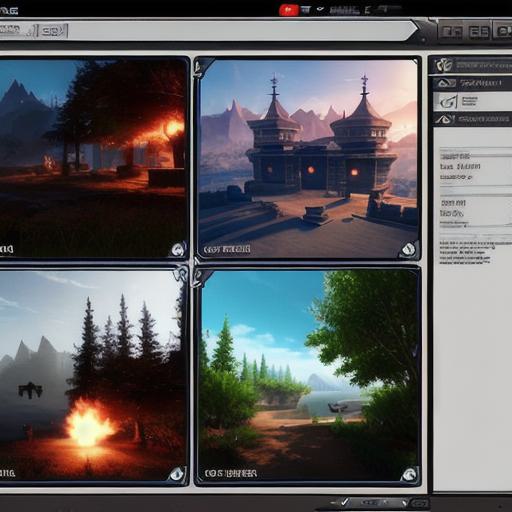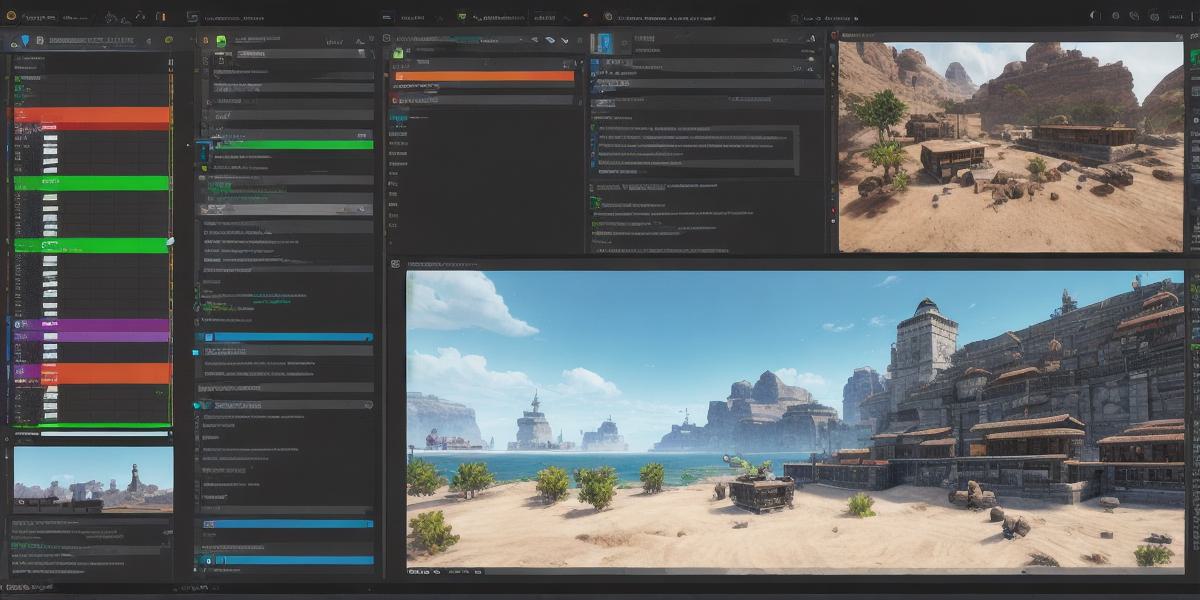Introduction
Game development has evolved significantly over the past few years, thanks to advancements in technology and an increase in demand for interactive experiences. Whether you’re a small indie developer or a large game studio, creating a successful game requires a well-organized workflow that streamlines your development process and helps you deliver a polished product on time and within budget. In this article, we’ll explore the key steps in a game development workflow and best practices to help you optimize your development process and create games that engage and delight players.
- Pre-Development: Planning and Conceptualization
Before you start coding, it’s essential to have a clear understanding of what you want to achieve with your game. This involves developing a concept that outlines the game’s mechanics, storyline, characters, and visual style. Here are some key steps to help you plan your game:
1.1. Develop a Game Concept
The first step in any game development process is to develop a game concept that outlines the game’s mechanics, storyline, characters, and visual style. This document will serve as a roadmap for your team and help you stay on track throughout the development process. When creating a game concept, it’s essential to keep it simple and focused.
1.2. Conduct Market Research
Market research is critical to ensure that your game meets the needs of your target audience. This includes analyzing competitor games, identifying trends in the gaming industry, and understanding the preferences of your target market. By conducting thorough market research, you can create a game that stands out from the crowd and resonates with players.
1.3. Define Your Budget and Timeline

Once you have a clear understanding of what you want to achieve with your game, it’s time to define your budget and timeline. This involves breaking down your project into smaller tasks, estimating the time required for each task, and determining the resources needed to complete them. By defining your budget and timeline upfront, you can avoid cost overruns and ensure that your game is delivered on time.
- Development: Design and Prototyping
Once you have a clear plan in place, it’s time to start developing your game. This involves designing the game mechanics, creating prototypes, and testing them to ensure they work as intended. Here are some key steps to help you with this phase:
2.1. Design Game Mechanics
The game mechanics are the rules that govern how players interact with the game world. This includes designing the controls, defining the objectives, and creating the rules for the game’s core systems. When designing game mechanics, it’s essential to keep them simple and intuitive, so players can easily understand how to play the game.
2.2. Create Prototypes
Prototyping is an iterative process that involves creating a working version of your game to test its mechanics, design, and user interface. By creating prototypes, you can identify potential problems early on in the development process and make necessary changes before investing too much time and resources into the project.
2.3. Conduct User Testing
User testing is a critical part of the game development process that involves testing your game with real players to gather feedback on its mechanics, design, and user interface. By conducting user testing, you can identify areas where your game needs improvement and make necessary changes before releasing it to the public.
- Post-Development: Marketing and Distribution
Once your game is ready for release, it’s time to focus on marketing and distribution. This involves promoting your game to potential players, making it available in app stores, and analyzing player feedback to identify areas for improvement. Here are some key steps to help you with this phase:
3.1. Develop a Marketing Strategy
A well-developed marketing strategy can help you reach your target audience and generate excitement for your game. This includes developing a social media presence, creating a website, and reaching out to gaming influencers to promote your game. By developing a comprehensive marketing strategy, you can ensure that your game reaches the right people.
3.2. Distribute Your Game
Once your game is ready for release, it’s time to distribute it through app stores or other distribution channels. This involves submitting your game to the relevant platform, setting up payment systems, and configuring analytics to track player behavior and identify areas for improvement. By distributing your game effectively, you can reach a wider audience and generate more revenue.
3.3. Analyze Player Feedback
Player feedback is critical to improving your game’s mechanics, design, and user interface. By analyzing player feedback, you can identify areas where your game needs improvement and make necessary changes before releasing updates or sequels.
Summary
Game development is a complex process that requires careful planning, execution, and analysis to create games that engage and delight players. By following the key steps outlined in this article, you can optimize your development workflow and create games that stand out from the crowd. Remember to stay focused on your target audience, keep your game mechanics simple and intuitive, and analyze player feedback regularly to identify areas for improvement. With these best practices in mind, you’re well on your way to creating successful games that players will love.
FAQs
- What is the most important step in the game development process?
The most important step in the game development process is planning and conceptualization. This involves developing a clear understanding of what you want to achieve with your game, conducting market research, and defining your budget and timeline.
- How long does it take to develop a game?
The length of time it takes to develop a game depends on the complexity of the project, the size of the team, and the resources available. On average, game development can take anywhere from several months to a few years.
- What tools do I need to develop a game?
The tools you need to develop a game depend on your development process and the type of game you’re creating. This includes game engines, programming languages, design software, and testing tools.
- How do I market my game?
Marketing your game involves promoting it to potential players through social media, creating a website, and reaching out to gaming influencers to promote your game. You should also analyze player feedback regularly to identify areas for improvement.
- What is the most important metric for measuring the success of a game?
The most important metric for measuring the success of a game is player engagement. This includes factors such as player retention, time spent playing, and the number of in-app purchases or subscriptions.
